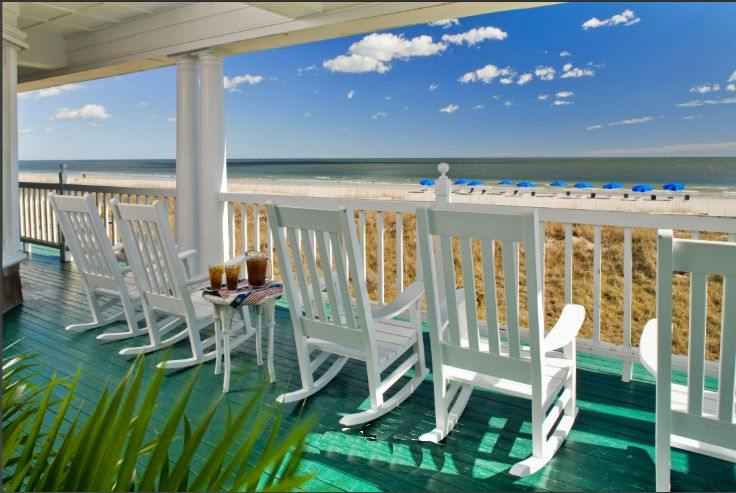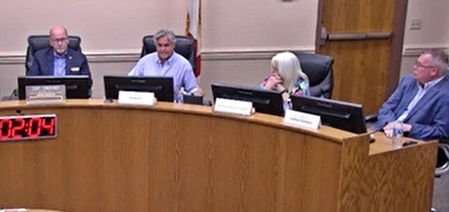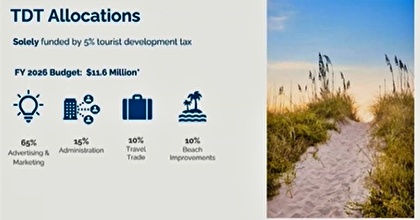Poynter seeks 'Bed Tax' funds but TDC says we want legal opinion on state revision of fund rules
- Mike Lednovich
- Aug 25
- 5 min read

Tourists flock to Fernandina Beach every year — nearly a million overnight visitors in 2024 alone — drawn by its historic downtown, beaches, and small-town charm. But City Commissioner Tim Poynter said Monday those same visitors are straining the very infrastructure that makes the city attractive, and Fernandina isn’t seeing its fair share of the bed tax dollars generated within city limits.
At Monday's meeting of the Amelia Island Tourist Development Council (TDC), Poynter pushed for a new funding formula: all “bed tax” revenue collected in Fernandina Beach should stay in the city, to help pay for sidewalks, utilities, and other projects stressed by tourism. Fernandina Beach contributes $2.85 million in bed tax yearly.
“With the advent of Florida Statute 125.0104, that now allows TDC monies to be spent on infrastructure… the TDC over the years has done an incredible job of getting millions of people visiting our island, and it’s wearing out the downtown of Fernandina,” Poynter told the council.
Poynter, the city's representative on the TDC, formally moved to recommend that the Nassau County Commission — which oversees the TDC — enter into a local agreement with the city to “prorate the portion of tourism development tax that’s raised in the city limits to be spent in the city limits” under the state’s guidelines.

He argued that property taxes cannot cover the city’s needs. “That’s not something that you can do on an ad valorem tax basis, but it’s a big deal. It’s a big dollar amount, and so we’re looking for some dollars,” Poynter said.
But TDC Chair and County Commissioner John Martin, whose district includes Fernandina Beach, stopped short of allowing a vote, insisting the county attorney’s office must weigh in first.
“I believe it needs to go through legal review for us to be informed on how we should vote… it should have that opportunity and be brought on a future agenda,” Martin said.
The council voted to table Poynter’s motion, with Hilliard Mayor John Beasley making the motion to table. Poynter cast the lone “no” vote.
Martin was quick to stress that the delay wasn’t meant to kill the idea.
“I am not trying to stonewall this,” Martin said looking at Poynter. “The city is a big part of my district, and I’ve been on the record in the past saying, yeah, if we can legally do something to contribute more money within the city, then I’m all for it. I just don’t know, and I don’t know until it passes legal review whether this is something that we should be considering”.
He added that the county would expedite its review so Fernandina could get an answer quickly.
For Poynter, who is under the gun for voting to institute paid parking in historic downtown, the issue is simple: Fernandina Beach, with a population of just over 14,000, bears the brunt of tourism’s impact.
“It’s not the 14,000 people [who live here] that are wearing out Fernandina. It’s the millions of people who are coming every year that are wearing out Fernandina,” he said.
Tourist Development data backs up the sheer scale of tourism. According to the Amelia Island Convention & Visitors Bureau, tourism generated $11.6 million in bed tax revenue last year. Nearly 810,000 overnight visitors came to the island in 2024, along with 215,000 day-trippers. All told, tourism drives almost $1 billion annually into Nassau County’s economy.
Tourism also accounts for 38.7% of all sales tax collected in the county, 24% of gas tax revenues, and more than a quarter of local jobs.
But while the tourism dollars are big, the money is tightly restricted and controlled. The 5% tourist development tax — levied only on short-term lodging like hotels, inns, and vacation rentals — cannot be spent at will. The TDC spends 65% of revenues to advertising and marketing, 10% to beach improvements, 10% to travel trade, and 15% to administration and overhead.
“Everything we do has to tie back to tourism,” Assistant County Manager Marshall Eyerman explained at the meeting. “The general rule of thumb is, are we putting heads in beds?”

That changed in July when revisions were made to how bed tax money could be used with the key provision being infrastructure projects could be funded if a county exceeded $10 million in bed tax revenue annually.
Even with a recent legislative change, most of those restrictions remain. Counties that collect more than $10 million annually — a threshold Nassau surpassed during the past four years — can spend on certain capital projects, but the focus must remain on tourism facilities. Projects like restrooms, beach walkovers, and visitor centers qualify. Roads, sewers, or electrical upgrades may not.
Some would argue that Fernandina's Historic Downtown is a major tourist attraction and should qualify for the money. The county already agrees that Fernandina's beaches are a major tourist draw and the TDC is investing to have the city's beach parks totally redone.
“That’s the part that we’ve really got to go back and look at… electrical improvements, those kind of things, sewer, plumbing, may not fit in any of those criteria,” Eyerman cautioned.
Even if Fernandina’s proposal clears legal review, funding isn’t guaranteed. The county’s tourism budget has plateaued at about $11.5 million for four years, with only modest growth expected. Roughly $11 million in reserves has already been earmarked for the aforementioned “beach harmonization” project, which will upgrade beach parks and access points.
By law, the TDC can cover no more than 70% of a capital project’s costs, leaving the city responsible for the other 30%. That means Fernandina would need to prepare its own budget match.
Martin reminded the council that big-ticket items must be proposed during the county’s budget cycle.
“It would be something you would want to be presented at budget time… We’re probably looking at this at the 2026–27 budget,” he said.
Poynter acknowledged the hurdles but pressed for clarity. He urged the county and TDC to do a better job explaining “where these buckets (of money) lie and what is already being done in these buckets for the county, for the beaches, for the city of Fernandina Beach”.
Martin, for his part, said he is open to whatever the law allows.
“Whatever we’re legally allowed to do, and it works within the budgets for everybody, I’m all for… But it’s not like the goose that laid the golden [egg]. It’s got to pass all these wickets,” he said.
For now, county staff will meet with City Manager Sarah Campbell and prepare a legal analysis before the TDC revisits the issue.
Poynter said he remains hopeful.
“I’m looking for any kind of help that’s within the legal ramifications and the goodheartedness of our county to help Fernandina, and that’s what I’m looking for,” he said.




Comments